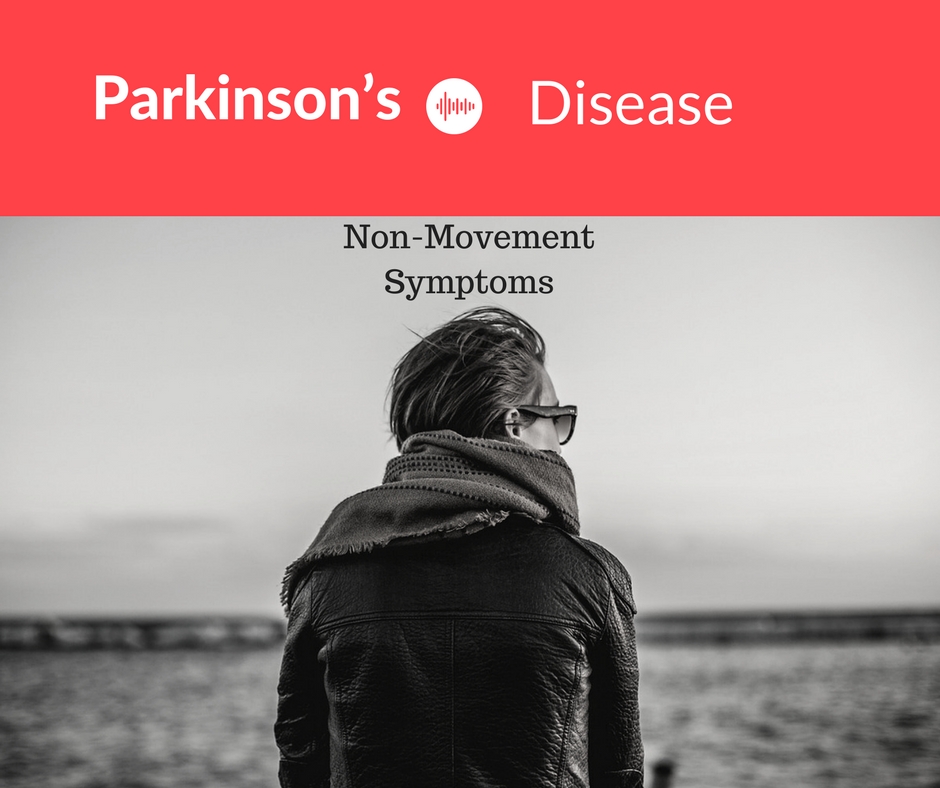Parkinson’s Disease Symptoms Impacting Daily Life
 By Sarah Jones, MPA, MS, CEO of PMDAlliance
By Sarah Jones, MPA, MS, CEO of PMDAlliance
Often, we think we can spot someone with Parkinson’s disease (PD). Seeing a hand tremor or someone moving slowly can be signs of this progressive, neurodegenerative disorder that affects more than one million people in the United States. Motor symptoms of PD, which also include dyskinesia (the involuntary movement that often looks like wriggling or fidgeting) or loss of balance, are often the first and only treatment many people receive or are educated about. However, it is only a part of the experience of living with PD.
PD manifests in symptoms that go beyond movement, and every person experiences a different collection of symptoms specific to them. It is because these issues are not visible that it can exist for years or decades without discussion among family, friends and with physicians. Fortunately, we have treatments available that may help relieve symptoms. At PMDAlliance, we are dedicated to surfacing the issues lying beneath the surface because, as our survey (discussed below) demonstrates, they can often impact the quality of life more than motor symptoms.
For example, a person with Parkinson’s may have trouble sleeping or feel anxious or depressed. Also, hallucinations (seeing, feeling or hearing something that isn’t really there) and delusions (false beliefs) collectively occur in more than half of people living with PD over the course of their disease, often as a result of a side effect of medication or simply because of the disease processing. These things are a normal part of the disease but need to be talked about more.
The Challenges of Non-Movement Symptoms
This spring, the PMDAlliance surveyed the community, including people with PD and care partners, to understand how non-movement symptoms impact their lives and quality of life. The survey found that among those who experienced non-movement symptoms, 84 percent agreed that these symptoms had a negative impact on quality of life. More than half rated them as more challenging or much more challenging to live with than movement symptoms. We found that nearly all respondents (90 percent) experienced non-movement symptoms. Commonly experienced symptoms included:
- Sleep problems (84 percent)
- Cognitive challenges (75 percent)
- Anxiety (65 percent)
- Depression (55 percent)
- Hallucinations (41 percent)
- Delusions (24 percent)
When people with Parkinson’s experience non-movement symptoms, care partners are impacted, too. For example, if a person with Parkinson’s begins to develop hallucinations, they might see small animals in their home or children playing in the yard. At first, a care partner might be able to convince a loved one that what they are seeing isn’t real. But when those visions become more frequent, they can become more bothersome, possibly alarming. Care partners may find themselves arguing with their loved one about what is real or not. This causes stress. In fact, hallucinations and delusions associated with Parkinson’s disease also increase the chances of nursing home placement.
Also, anxiety, a symptom that we found occurred in more than 65 percent of people with PD, can be experienced by the care partner in profound ways. It is not uncommon for a person to experience debilitating anxiety, particularly if not addressed as a part of the treatment plan with their physician. Anxiety, much like many non-movement symptoms, is a natural part of the disease process. It is also a symptom that, like hallucinations, delusions and sleep, have treatment options. We are pleased this survey brings this reality to the surface and normalizes the conversation. More conversation is likely to translate to better care and life enjoyment for the person with the disease and those that love them.
In our survey, we also learned that everyday activities most of us take for granted are much harder for people managing PD and their care partners. Non-movement symptoms negatively impacted:
- Ability to sleep (84 percent)
- Planning for future events (76 percent)
- Socializing (71 percent)
- Making plans with family and friends (70 percent)
- Being intimate with their partner (68 percent)
- Completing household chores (68 percent)
- Running errands (67 percent)
Help is Available
Even though non-movement symptoms are common, they are less rarely reported and treated.,,
That’s why every visit to a movement disorder physician (a neurologist with advanced education in movement disorders) is an important opportunity to relate how the person with Parkinson’s is coping with both motor and non-movement symptoms. Many motor and non-movement symptoms can be addressed.
If you are caring for someone experiencing non-movement symptoms associated with Parkinson’s disease, you and your loved one are not alone. PMDAlliance encourages people with Parkinson’s and their families to talk to their physician or support groups to learn more about this aspect of the disease and to be sure to see a movement disorder specialist, at least annually, to evaluate disease progression.
We also encourage people to visit the non-movement symptoms page at PMDAlliance.org to learn more about non-movement symptoms associated with Parkinson’s disease. While there, please sign up for our free, monthly practical educational e-newsletter.
About the survey:
The survey was conducted online with the PMDAlliance membership from March 19-March 31, 2018. A separate set of questions was asked to respondents who indicated that they or their loved one had experienced non-movement symptoms versus those who did not report the presence of non-movement symptoms. Seven hundred people started the survey, comprising 377 care partners of persons with PD, 286 people with PD, 10 non-care partners/family members of people with PD, and 27 others, with approximately 650 who moved on to the subsequent questions about non-movement related symptoms. Nearly 600 respondents completed the survey in full. As not all respondents answered every question, sample sizes may vary for each question. The survey was sponsored by ACADIA Pharmaceuticals Inc.
Category: Articles




































